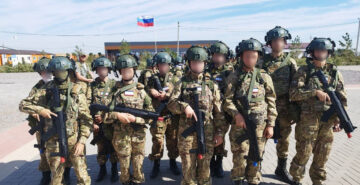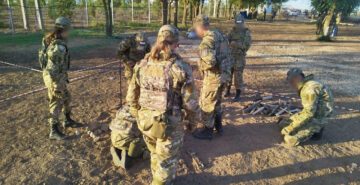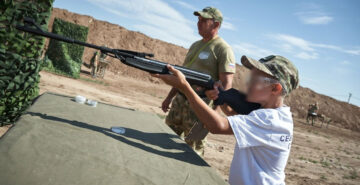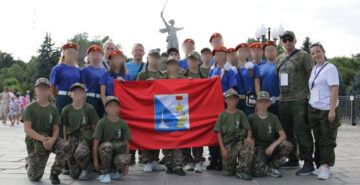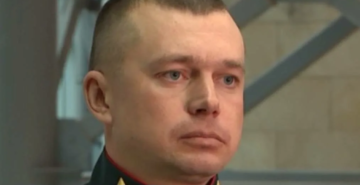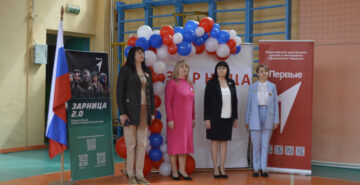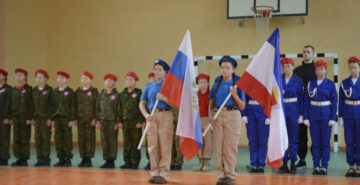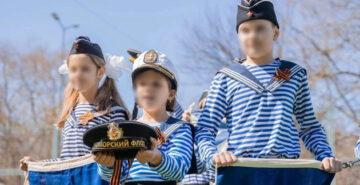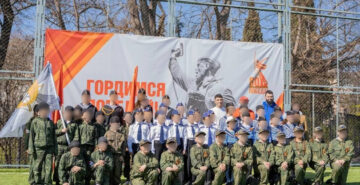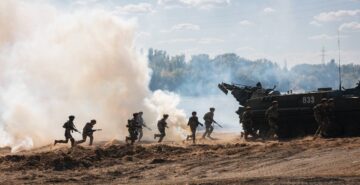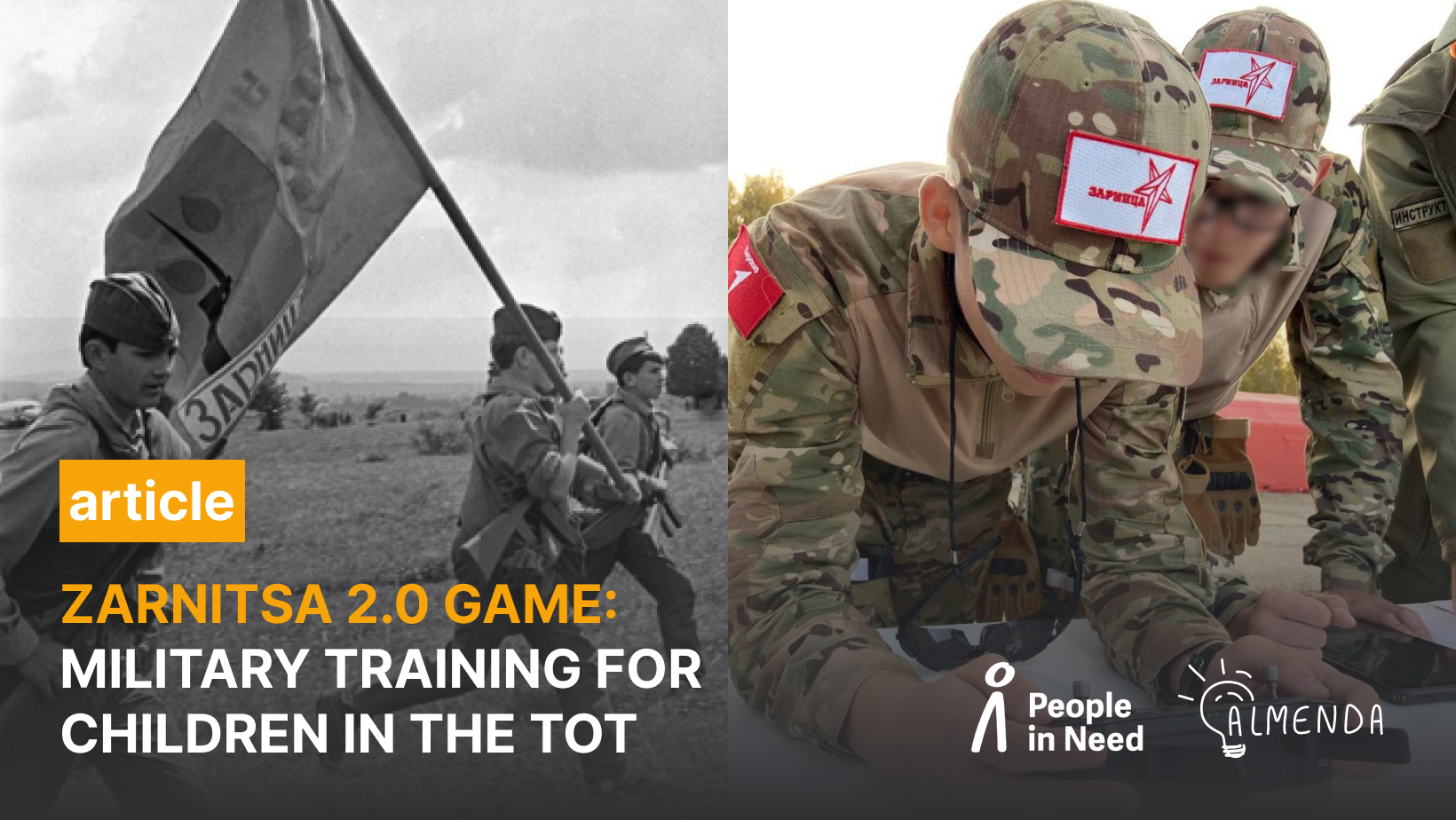

Zarnitsa 2.0 Game: Military Training for Children in the TOT
The educational environment in the temporarily occupied territories of Ukraine (TOT) has undergone dramatic changes under the influence of Russian policy. Monitoring of open sources – websites and social media pages of educational institutions, the so-called ‘Ministries of Education’ and youth organizations – demonstrates the profound militarization and indoctrination of children and young people in the TOT. The news and photos look like scenes from Soviet movies: children wearing military uniforms, revival of Soviet era games and movements, military events and mandatory participation in ‘patriotic’ events. However, this is not a movie – it is the harsh reality and daily life of Ukrainian children living under occupation.
The school environment, extracurricular activities, and educational programs are all steeped in militarism and propaganda aimed at erasing Ukrainian identity and fostering loyalty to the occupying power. A striking example of this system is Zarnitsa 2.0 game, a large-scale project aimed at training a potential mobilization reserve for the army of the Russian Federation (RF, Russia), including Ukrainian children in the TOT.
History behind Zarnitsa Game and its transformation into Zarnitsa 2.0
Zarnitsa (the word zarnitsa literally means ‘heat lightning’) is a young pioneer military-patriotic game launched in the 1960s in the USSR to prepare schoolchildren for military service. The game was invented by a rural teacher from the Perm Region (now the Perm Territory of the Russian Federation), Zoya Krotova. In 1964, she came up with a competition for children: the kids were divided into teams, such as ‘pilots’, ‘sailors’, ‘infantry’, and other ‘military’; and their mission was to capture the enemy’s flag.” Each player had paper shoulder marks attached, which the opponents tried to tear off. Anyone who had one shoulder mark torn off was considered wounded, and participants who lost both shoulder marks were eliminated from the game. It was first held on February 23, 1964, in the Perm Region, and two years later it became widespread throughout the Soviet Union.
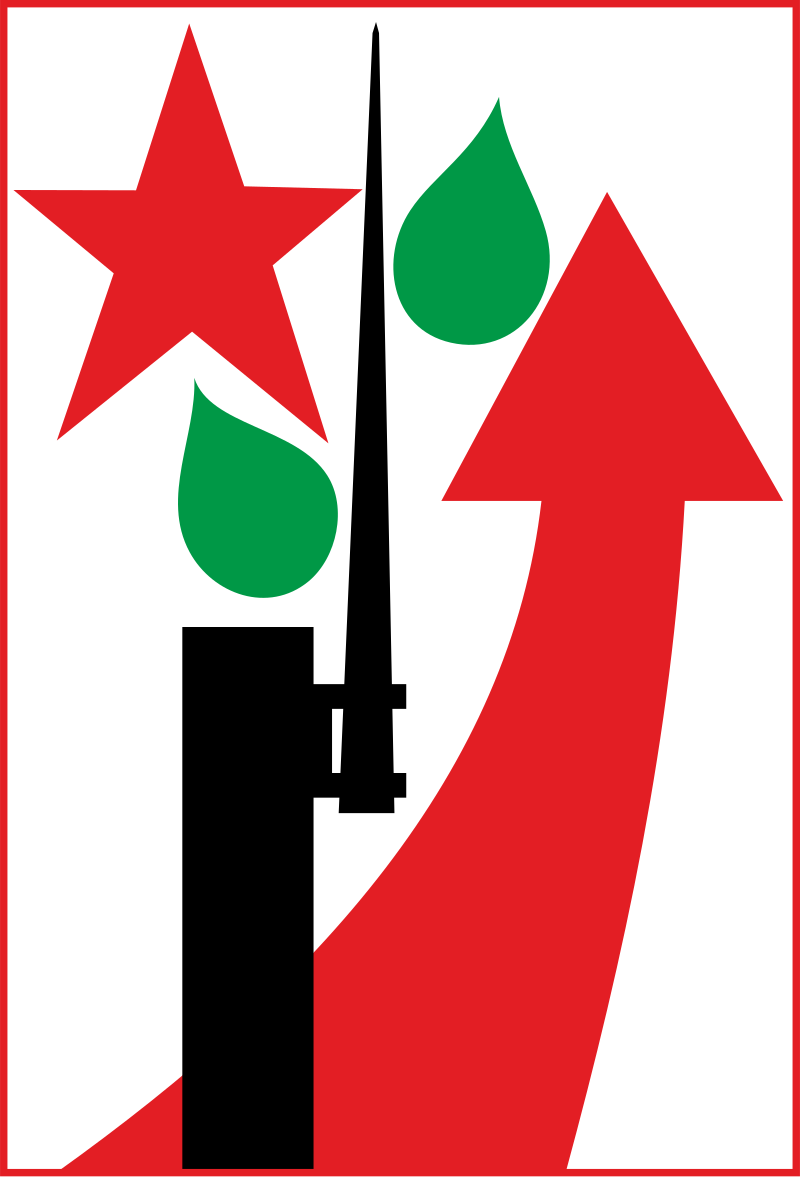

In the image: The emblem of the All-Union Young Pioneer Military Sports Game Zarnitsa. Source: https://surl.li/hakzpf
According to open source information, in the first five years of Zarnitsa, about 20 million schoolchildren from all over the USSR took part in various levels of the game. Despite such widespread involvement of children, there were no clear rules for the competition. The rules varied depending on the number of participants, weather conditions, or the availability of necessary equipment. It could be either a regular school competition or a large-scale combat reenactment.
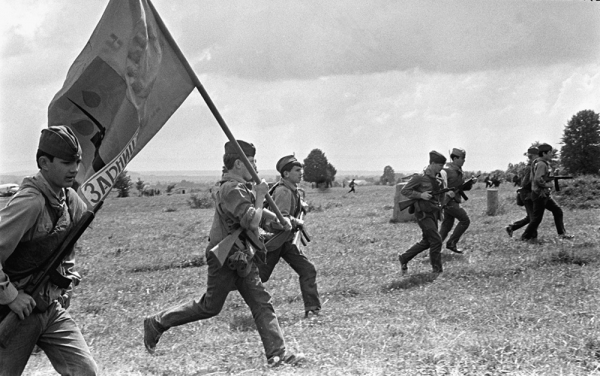

After the collapse of the USSR, Zarnitsa did not disappear completely; it continued to be held in Russia, without uniform rules and centralized organization at the federal level. Similar events continued to be held in some other countries, including Ukraine, but they had no clear ideological component.
In general, many countries around the world have pre-conscription or pre-basic training programs for young people, which usually cover the fundamentals of first aid, military knowledge, orienteering, or teamwork, without being overly militarized. In the Russian case, these activities go beyond the usual training: Children are not only taught basic skills, but also the idea of a constant threat from the outside and the need to defend Russia with arms in hand. In addition, Zarnitsa in the Russian Federation has undergone significant transformations, and now the skills taught to young people can hardly be called ‘basic’. They include more complex and specific military knowledge and skills that prepare children to participation in real combat operations. The involvement of children from the TOT in such programs is particularly disturbing, as it violates international humanitarian law.
Zarnitsa saw an active revival after the launch of the All-Russian Children’s and Youth Movement of the First in 2022, modeled after the Soviet Union’s Young Pioneers. In 2023, the Movement, together with the Znanie Society, developed a game project called Zarnitsa: Legends of the Future, the final stage of which took place in the Nizhny Novgorod Region from September 22 to 28. The event was attended by 240 teenagers aged 14 to 16 from 14 regions of Russia, including 15 children from the TOT of Donetsk Region. The game was supported by the Voin (Warrior) Center, Yunarmiya (Young Army), Rosmolodezh, MIREA Russian Technological University and other organizations.
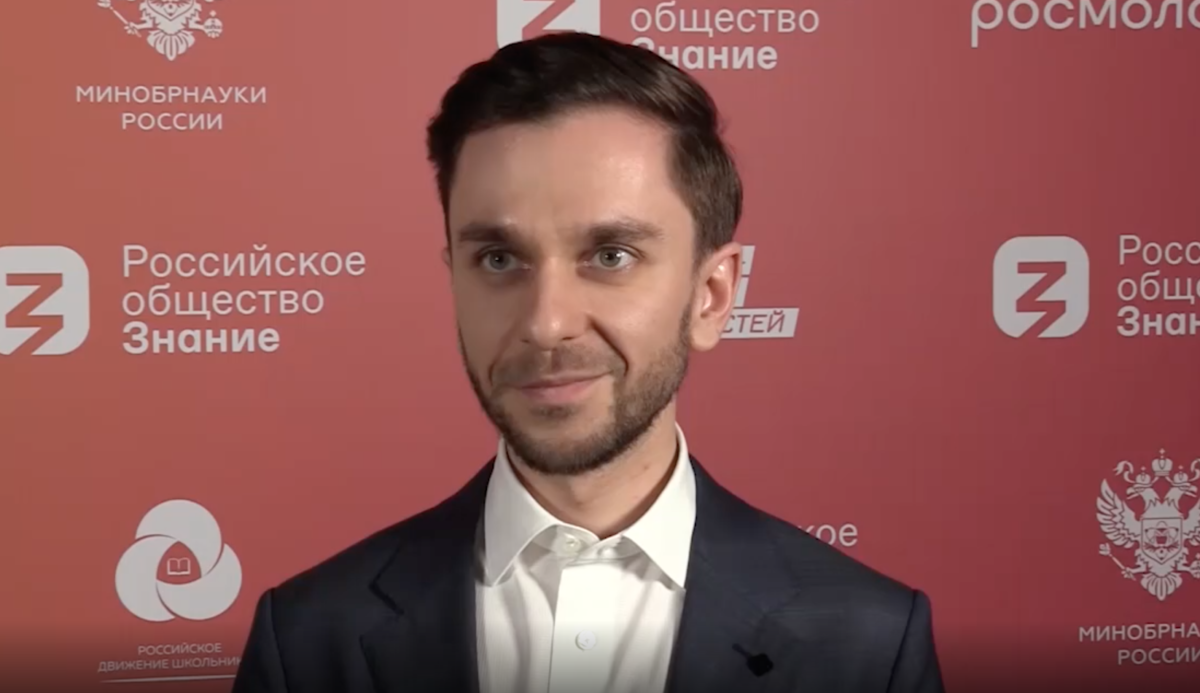

“Zarnitsa is one of those projects that instill extremely important qualities: courage, fortitude, self-sacrifice – all of which we see today in the feats of the special military operation participants. It is very important that by watching them, we strive to cultivate and nurture these qualities not only in ourselves, but also in the younger generation […],” Maksim Dreval, CEO of the Russian Society Znanie, described the game.
Photo: Maksim Dreval, CEO of the Znanie Society
A distinctive feature of this Zarnitsa version was the use of modern technology: unmanned aerial vehicles, unmanned ground vehicles, and laser tag and fire tag equipment. In his telegram channel, the so-called ‘head of the DPR’ Denys Pushylin said that “for six days, the participants lived in barracks, learned to provide first aid and participate in combat in a confined space”. The teams were led by the participants in the so-called special military operation.
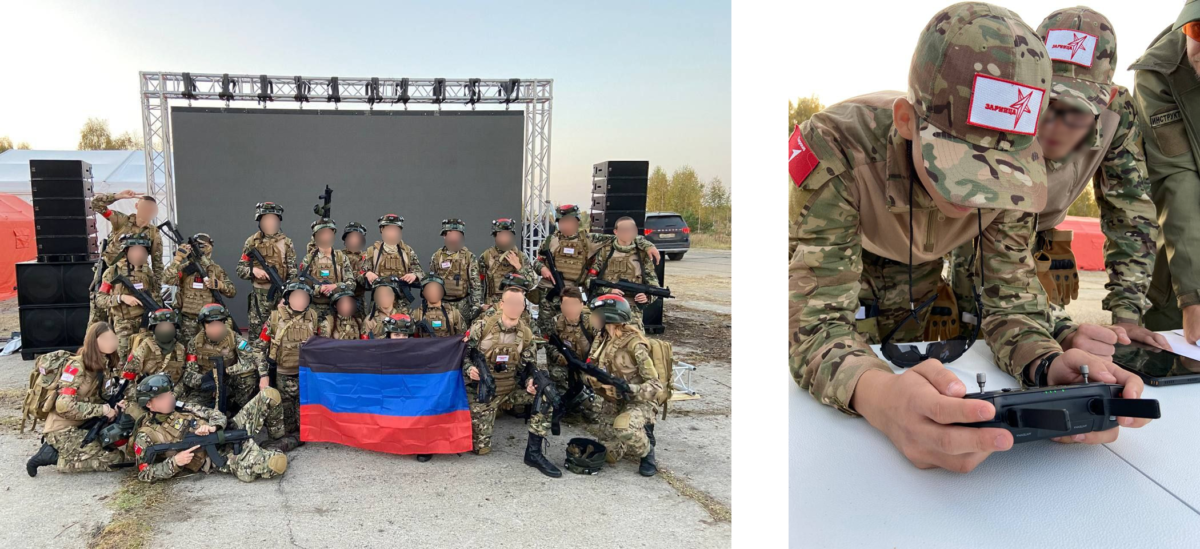

In the same year, the reboot of the game, Zarnitsa 2.0, was announced, which will be adapted to the current context, with uniform standards and rules. The first presentation was held in July 2023 at the Borodino War Museum and Reserve in the Moscow Region. After that, the game was tested in certain regions of the Russian Federation, as well as in the occupied Crimea. From July 18 to July 21, 2023, it was tested at the Artek Children’s Center by the finalists of the Big Break competition, including 131 children from the TOT of Donetsk, Luhansk and Zaporizhzhia Regions.
In November 2023, the then chairman of the board of the Movement of the First, Grigory Gurov, announced that in 2024 Zarnitsa 2.0 would be introduced throughout Russia (including the TOT) with the unified rules. The first season of the game started on February 23, 2024. Today, in 2025, the second season is underway. Now the rules of the game are regulated by the relevant Regulations.
The updated game, Zarnitsa 2.0, is a large-scale military competition among children and young people aged 7 to 21 years old, which is held in Russia and in the Ukrainian territories occupied by Russia. However, this is not merely a ‘children’s event’; through this game, they are actually taught to fight, under the guise of entertainment. As part of the project, participants learn the know-how of modern warfare, including controlling unmanned aerial vehicles, using unmanned ground vehicles, recognizing fakes and creating them, countering cyberattacks, and tips on how to escape from captivity. Quite often, the mentors are Russian military personnel who have fought (or are still fighting) against Ukraine. The game is played through an interactive online platform, which can attract and motivate a large number of young people to participate in Zarnitsa 2.0. At the same time, the materials of the media resource Verstka mention cases of forced involvement of children in the game.
In the near future, Russia, including the TOT, plans to introduce a new type of annual Zarnitsa – a family one. It was initiated by the State Secretary and Deputy Minister of Defense of the Russian Federation, head of the Defenders of the Fatherland Foundation Anna Tsivilova (see the photo below), whom some sources identify as the first cousin once removed of Russian President Vladimir Putin. The game will focus on the ‘transmission of traditional values’, along with Russian culture, history and lineage, ‘from older generations to younger ones’.
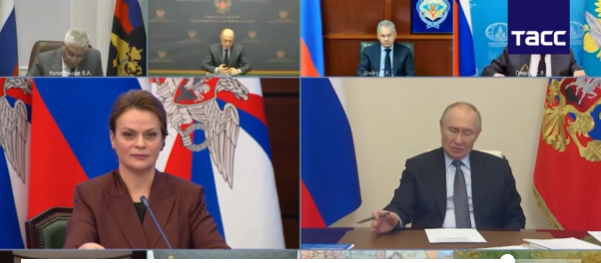

Photo: Anna Tsivilova, at a meeting of the Pobeda organizing committee, proposes that Putin introduce a family Zarnitsa. Source: https://tass.ru/obschestvo/22887703 , archive https://archive.fo/wip/wrCQh
Veterans and participants in the war against Ukraine should also be the teams’ mentors. Russian President Putin supported this initiative and instructed “to submit proposals for the organization of the Family Zarnitsa Competition in all constituent entities of the Russian Federation”.
Statistics on participation in Zarnitsa 2.0
2024 :
- More than 800,000 participants, almost 9,000 schools reached
- TOT of Zaporizhzhia Region: 860 participants registered
- TOT of Kherson Region: More than 250 children (21 squads) took part in the municipal stage
- 80 thousand mentors, including almost 400 veterans and participants of the so-called special military operation
- About 7,000 events were held as part of the game
- The final stage of the game in Volgograd: 600 children aged 11 to 17 y.o. participated, including those from the TOT of the AR of Crimea.
In 2024, children from the TOT, including the Autonomous Republic of Crimea and the city of Sevastopol, were actively involved in the game. Children were reportedly taken to the Russian Federation to participate in the district stage and the final:
- Crimea: The Police Cadets team from School No. 28 in occupied Simferopol secured the fourth place in the final in Volgograd, receiving prizes for excellence in firearms training, engineering equipment handling, and UAV operation.
- Frame 4
- Frame 2
Photo: Children from the TOT of the AR of Crimea at the final of the Zarnitsa 2.0 game, Volgograd, Russia, September 2024. Source: https://t.me/ValentinaLavrik/3436 , archive https://archive.ph/U8wiz
- Sevastopol: In August 2024, a team of students from Schools No. 25 and No. 60 participated in the district stage of Zarnitsa 2.0, which took place in the Volgograd Region. The team did not make it to the final.
- Frame 11
- Frame 13
Photo: Children from the TOT of Sevastopol taking part in the district stage of Zarnitsa 2.0, Volgograd Region of the Russian Federation, August 2024. Source: https://archive.ph/wip/b8LD5
2025 рік
- About 3,000,000 applications from 89 regions of the Russian Federation (including TOT) were registered;
- TOT of Zaporizhzhia Region: 1,800 participants (117 squads) registered;
- TOT of Kherson Region: 637 participants (39 squads) registered.
The game stages are ongoing.
Funding for Zarnitsa 2.0 and its organizers
The organizers/co-organizers of the game are:
- Movement of the First/Branch of Movement of the First: 2024-2025
- Yunarmiya/Branch of Yunarmiya: 2025
Both in the first and second seasons, Zarnitsa 2.0 is held with the active support of the Warrior Center, whose representatives are members of regional and district headquarters, etc.
Today, these two largest movements in Russia are led by Russian military personnel who fought against Ukraine and participants of the Russian President’s program Time of Heroes (for participants of the so-called special military operation):
- Frame 1
- Frame 2
- Artur Orlov, Chairman of the Board of the Movement of the First
- Vladislav Golovin, Chief of the General Staff of the Yunarmiya.
According to open sources, the subordinates of these individuals are allegedly involved in war crimes in Ukraine.
In 2025, Zarnitsa 2.0 is funded from the budgets of the organizers/co-organizers: Movement of the First and Yunarmiya movements, their regional branches (grants, subsidies from the federal budget of the Russian Federation). The costs may also be covered by Zarnitsa 2.0 partners. In April 2025, the Russian government allocated more than RUB 304 million to the Movement of the First to cover the costs of organizing and holding Zarnitsa 2.0, and this is only among the students of secondary vocational education institutions (it is assumed that their number will be at least 30,000).
Structure and content of Zarnitsa 2.0 in 2025
In the second season of Zarnitsa 2.0 (2025), a special category was introduced for students of secondary vocational education (SVE) institutions aged 18 to 21 years old. Last year, only children under the age of 17 could participate in the game. The age categories for participation in Zarnitsa 2.0 in 2025 are as follows: 18-21 years old; 14-17 years old; 11-13 years old; 7-10 years old.
In 2025, the game will be held in several stages. The application campaign started on February 2 (closed). The qualifying stage was also held in February. Municipal stages took place from March 1 to April 16, followed by regional stages from April 17 to May 31. For the older age group, district meetings are planned, and for the middle-aged participants and vocational school students, district stages will be held from June to July. The final of the game will take place in September 2025.
In the image: Demonstration of the game stages schedule, age categories and specifics of their participation in the game. Source: https://t.me/zarnitsa2_0/710 , archive https://archive.ph/tkIbA
Participants of the game – school and college students aged 7 to 21 years old – choose one of seven roles: squad leader, war correspondent, combat engineer, combat medic, UAV operator, political instructor, or assault soldier. Competitions based on the military specialties will begin at the qualifying stage. A mentor, who can be a veteran or a participant in the so-called special military operation, forms a team (squad) of 10 people and registers it on the website. After that, the squad goes through the stages mentioned above.
The game started in 2025 in the Kursk Region. In his speech, Artur Orlov emphasized
that the game symbolically starts in the city of military glory, where, just as 82 years ago, the struggle for ‘freedom and the future’ continues. He compared current events to the fight against Nazism in the Great Patriotic War, emphasizing that the game participants are ‘heirs to the great past’ and ‘the future of Russia’. Orlov also emphasized that Zarnitsa 2.0 should become a symbol of the unity and indestructibility of the ‘great Motherland’ (Russia).
Photo: Artur Orlov (wearing a headgear), Chairman of the Board of the Movement of the First with Dmitry Shevchenko, Director of the Warrior Center, Kursk Region, Russia, February 2025 (opening of the 2nd season of Zarnitsa 2.0). Source: https://archive.ph/wip/cYtQP
The official goal of Zarnitsa 2.0 is “the comprehensive development of the participants’ personalities, intellectual, moral and physical improvement, acquisition and consolidation of basic military training skills, formation of participants’ readiness and practical ability to fulfill their civic duty and constitutional obligations to protect the Fatherland (i.e. Russia)”.
Zarnitsa 2.0 participants are trained in tactical combat casualty care, UAV control, combat engineering, shooting, orienteering, and fighting fakes. They use laser tag equipment to simulate combat operations and simulators to practice drone control skills.
The aforementioned article by Verstka states that they have the instructions for the game and the tasks for participants include the following, in particular:
- Simulation of capture: A participant is locked in a cell with a window, allowing the squad to observe the participant from a distance using binoculars. The student has to use Morse code to transmit the message “escape”: blinking the left eye represents dots, blinking the right eye represents dashes.
In the image: A screenshot from Zarnitsa 2.0 website showing the composition (part) of the squad, age categories of participants. Source: https://xn--80aatfyr8b.xn--90acagbhgpca7c8c7f.xn--p1ai/ , archive https://archive.ph/1XuVH
During the qualifying stage, the participant performing the role of commander must exhibit attentiveness, physical fitness, ability to think logically, and knowledge of “the history of the Fatherland (Russia) and the basics of military service”. For example, in the Combat Task category, he/she must memorize the location of a ‘ready ambush’ reported by intelligence on a diagram and show the unit the enemy’s firing positions on a map. And in the Cold Calculus task, the student has to calculate how many contract soldiers can go on a combat mission if not all of them are in the barracks.
The tasks described above show that Zarnitsa 2.0 is not a child’s game, and the program goes even further than the initial basics of military training. In fact, it is a system of targeted preparation of children, including those in the TOT, for military service through the acquisition of basic military skills and specialties. Thanks to this approach, participants under the age of 18 not only acquire basic knowledge, but also undergo full physical and psychological training, which makes them fully prepared to real combat missions in the army.
Militarization of Children in the TOT Through Zarnitsa 2.0: The Case of the Autonomous Republic of Crimea and Sevastopol
In the TOT of the Autonomous Republic of Crimea and the city of Sevastopol, the second season of the military-patriotic game Zarnitsa 2.0 is underway. Since the game has been based on unified rules since 2024, in the occupied Crimea, as well as in other TOTs, the stages, age and roles of participants do not differ from those described above. The timing of a particular stage of the game may vary slightly. The differences are mostly in the partners involved in organizing Zarnitsa 2.0 on the ground. In general, the occupying authorities in these TOTs are actively implementing Russian measures to militarize children and youth and destroy their Ukrainian identity. Zarnitsa 2.0 is no exception.
Autonomous Republic of Crimea
In April 2025, municipal stages of Zarnitsa 2.0 took place in the occupied Crimea. In the Bakhchisarai District, the so-called ‘Minister of Education, Science and Youth of the Republic of Crimea’ Valentyna Lavryk attended its opening. The event was held at the Poshtove Secondary School. According to her, participation in the game helps children develop teamwork, leadership skills and “strengthen their love for their homeland (Russia)”. Ms. Lavryk also emphasized that such events help foster ‘true patriots’ who should become ‘the backbone of the country’ in the future.
- Frame 6
- Frame 12
Photo: Opening of the municipal stage of Zarnitsa 2.0 with the participation of Valentyna Lavryk, Bakhchisarai District of the TOT of the AR of Crimea, April 2025. Source: https://vk.com/wall-148027165_9408 , archive https://archive.ph/upCOC
Municipal stage of Zarnitsa 2.0 in Simferopol District for the middle school age group was held on April 5 at Nova Andriivka School. The competition was attended by 18 teams from schools, with students demonstrating drill and firearms skills, knowledge of history, and the ability to assemble and disassemble weapons.
Also, on April 8, the municipal stage of the game started at Yalta Secondary School No. 11 and lasted three days. The event was organized by the local branch of the Movement of the First with the support of the so-called ‘Department of Education and Youth Policy’ of Yalta. The Yalta branch of Volunteer Society for the Assistance to the Army, Aviation, and Navy was involved in the organization of Zarnitsa 2.0. At this stage, more than 150 students took part in the game: three teams of different ages from each school in the city. The children had to pass five tests: firing line, drill, basics of tactical combat casualty care, general military literacy, and a paramilitary obstacle course.
Back in January 2025, a corresponding headquarters was established in the TOT of the Autonomous Republic of Crimea to hold the regional stage of the second season of Zarnitsa 2.0. It included representatives of the occupation administrations, including the so-called State Council of the Republic of Crimea, Ministry of Education, State Committee for Youth Affairs, Rosgvardia (National Guard) Department, and other organizations – the Union of Veterans of the Special Military Operation, the Defenders of the Fatherland Foundation, the Crimean branch of the Volunteer Society for the Assistance to the Army, Aviation, and Navy, V. I. Vernadsky Crimean Federal University, as well as the Autonomous Non-Profit Organization Crimean Research Institute of Unmanned Technologies.
The city of Sevastopol
In April 2025, in the occupied Sevastopol,
- The final of the regional stage of the military-patriotic game Zarnitsa 2.0 for junior schoolchildren took place, where teams from Schools No. 13, No. 25, No. 48 and Gymnasium No. 24 competed.
- Frame 7
- Frame 3
Photo: Students from the TOT of Sevastopol at the regional stage of Zarnitsa 2.0 (junior age group), April 2025. Source: https://archive.ph/gGyR9
- The regional stage for older age groups has begun, with 10 teams participating. The participants will have 11 competitions over three days: from drill training to tactics, fire and first aid training, survival skills, camouflaging, historical quiz and the basics of military training.
- The municipal stage was held for college and secondary vocational school students. Participants demonstrated skills in assembling and disassembling a Kalashnikov training rifle, loading a magazine with ammunition, and the proper use of a military protective gear for protection against chemical and radiation exposure.
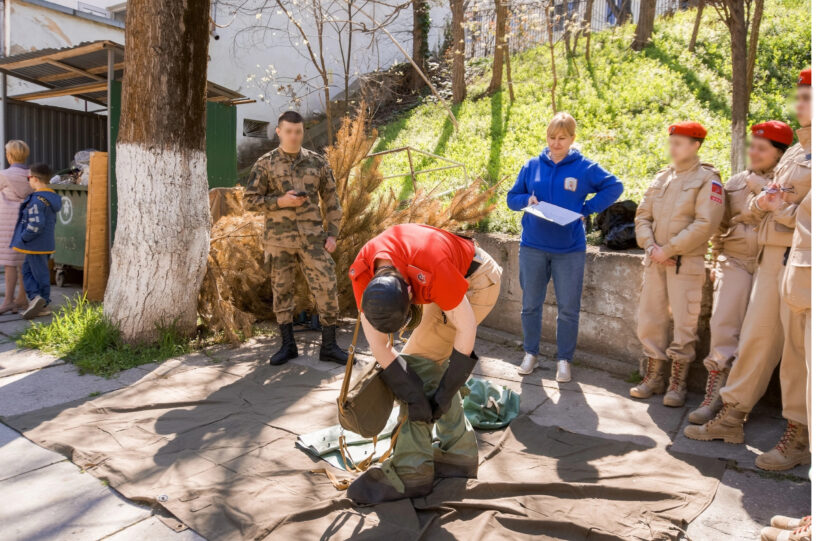

Photo: Vocational education students at the municipal stage of Zarnitsa 2.0, TOT, Sevastopol, April 2025. Source: https://archive.ph/N3nGu
Therefore, Zarnitsa 2.0 Game has become a tool for militarizing the younger generation, aimed at preparing them for service in the Russian armed forces. Its format has nothing to do with children’s entertainment and rather resembles training at a military training ground according to modern army standards.
Children and young people from the TOT are actively involved in Zarnitsa 2.0, and they are actually taught to fight against their own state. These actions are a violation of Article 51 of the IV Geneva Convention, which prohibits any pressure or propaganda aimed at securing voluntary enlistment in the military service of the occupying army.
Through militarized ‘patriotic upbringing’, Ukrainian children in the TOT are actually forced to swear allegiance to the occupying power. This directly contradicts their right to respect for honor, habits, customs and cultural identity, which are protected by the international law.
This article was prepared with the financial support of the Czech organisation People in Need, as part of the SOS Ukraine initiative. The contents of the publication do not necessarily reflect their position.

